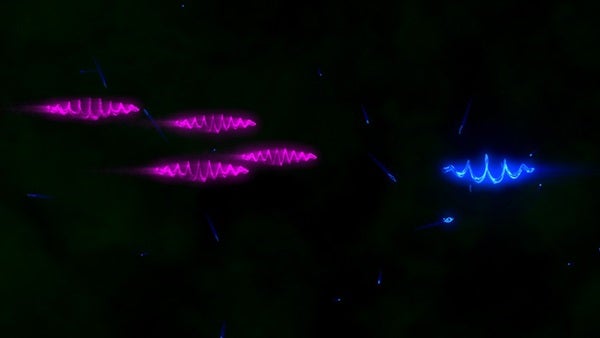There are many ways to measure the extragalactic background (EBL), the universe’s glow from myriad sources. One of these measurement techniques uses the light from faraway blazars — active galaxies with supermassive black holes at their centers, blasting jets of high-speed particles and radiation out into space. Scientists study the gamma rays streaming from these high-powered jets. The gamma rays have a very long journey between their blazars and Earth, where astronomers can measure them. Along the way, some of these gamma rays will strike an intervening EBL photon and annihilate into a positron and an electron.
There is a special relationship between the energy of the gamma ray and the energy of the EBL photon. A higher-energy gamma ray annihilates only with a lower-energy EBL photon, and vice versa. Astronomers can therefore use the missing gamma rays to tell them about the EBL interference.
In this animation, watch a gamma ray complete its long journey from its blazar origins, through the EBL, to the Fermi telescope orbiting Earth that measures its final energy.
Video credit: NASA/Goddard Space Flight Center/Cruz deWilde










